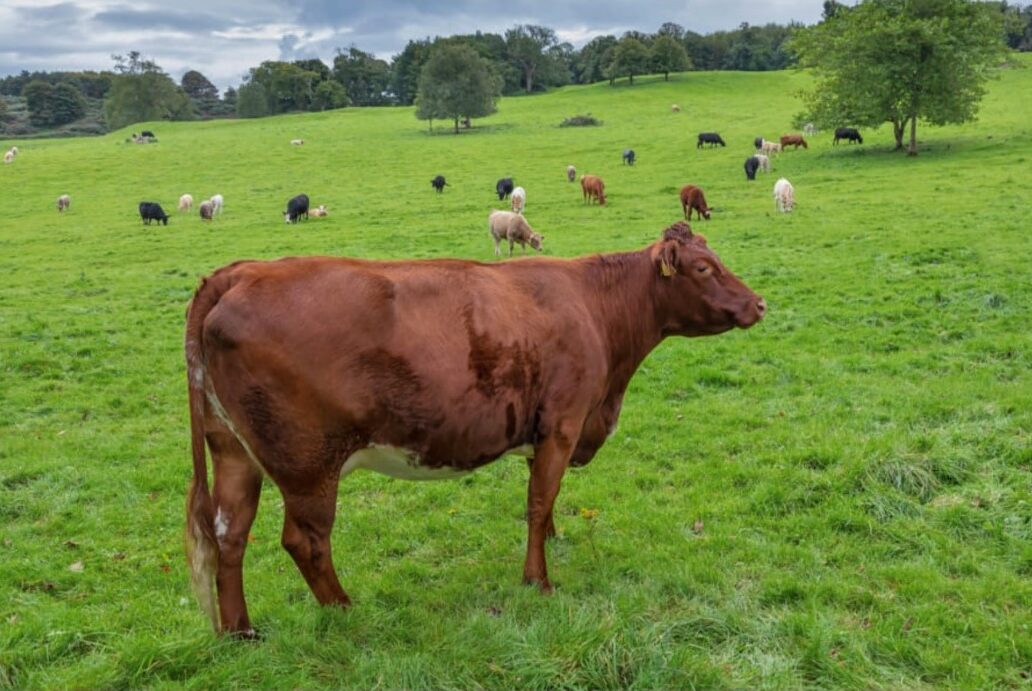The Irish Cattle Breeding Federation’s (ICBF’s) database is now the largest cattle-breeding database in the world, with over 2.5 million genotyped animals.
Gene Ireland is the name of the ICBF’s progeny testing programme, which is run in conjunction with both pedigree and commercial Irish beef and dairy farmers with the support of artificial insemination (AI) stations and breed societies.
ICBF’s Pat Donnellan explained that Gene Ireland “is made up of four parts”.
The first part involves producing a list of bulls from the ICBF database based on their indexes, ancestry and genomic information.
“These bulls are then inspected, selected, semen taken off them and this is put out into Irish herds for progeny testing under real Irish farm conditions,” said Pat.
“The bulls are then evaluated for all the traits that are of importance to Irish farmers.”
This includes factors such as calving difficulty; weight gain; growth; carcass traits; and the bull’s daughter’s milk and fertility.
“There are a lot of difficult to measure traits that are new and novel such as methane emissions and feed conversion efficiency,” added Pat.

A sample of each bull’s progeny are then taken to the ICBF progeny test unit in Tully, Co. Kildare, so that performance recording can be carried out.
Finally, Gene Ireland estimates the genetic merit of these animals based on all the gathered data, and the bulls are then ranked on their indexes for Irish farmers to go on and choose their semen for breeding cows.
“With all the focus on stars and data, it’s also important not to forget that the quality of the bull, its functionality and how he looks is of utmost importance,” said Pat.
ICBF’s Niall Kilrane explained that every year, a panel of high-index breeding bulls are assembled and made available to farmers in the spring and autumn.
“Those bulls are provided for the Gene Ireland breeding programme by the AI companies, the breed societies and ICBF also imports semen from high-index international bulls to contribute towards international genetic evaluations,” he said.
“We distribute 500 straws of each of these bulls. Some of the straws go into dairy cows, some go into suckler cows and on-farm data is captured in terms of inseminations, calving records, live-weights and daughter fertility and milk ability.

The ICBF then purchases 10-15 progeny from each bull to record data on. All of this data goes into the ICBF database to get an accurate evaluation on bulls as quickly as possible.
“Every year, what we’re looking to do is identify and assemble a high-index panel of bulls that have potential to drive profit at farm level and that each year; the average index of those panels is increasing,” said Niall.
ICBF’s Stephen Conroy explained: “As part of the breeding programme, we take 20 progeny from each AI sire of interest into the centre at Tully and we are after three key pieces of data.

“The first is feed intake. In the terminal index, feed intake has a 16% weighting and in the replacement index, it’s 18%.
“The second key data is methane emissions. We can select cattle in the future that will reduce the greenhouse gas (GHG) of our national suckler herd by identifying key bulls of interest.
“What we are seeing to date is a difference within breeds of 20% between progeny of the same age and gender for methane emissions. That’s a key reduction that can be made.”
When all cattle are finished their test-phase in Tully, they are sent to the factory for processing.
The carcass is cut into into 24 cuts of meat to assess the meat yield and collate that back to the sire. Eating quality is also examined and a number of tests are done to determine the eating quality.
The loin of the animal is scanned to see the amount of marbling and sub-cutaneous fat.
“Currently, there is an index for meat-eating quality which is available in all AI sires and will be available for all sires including stockbulls in mid-summer,” added Stephen.
